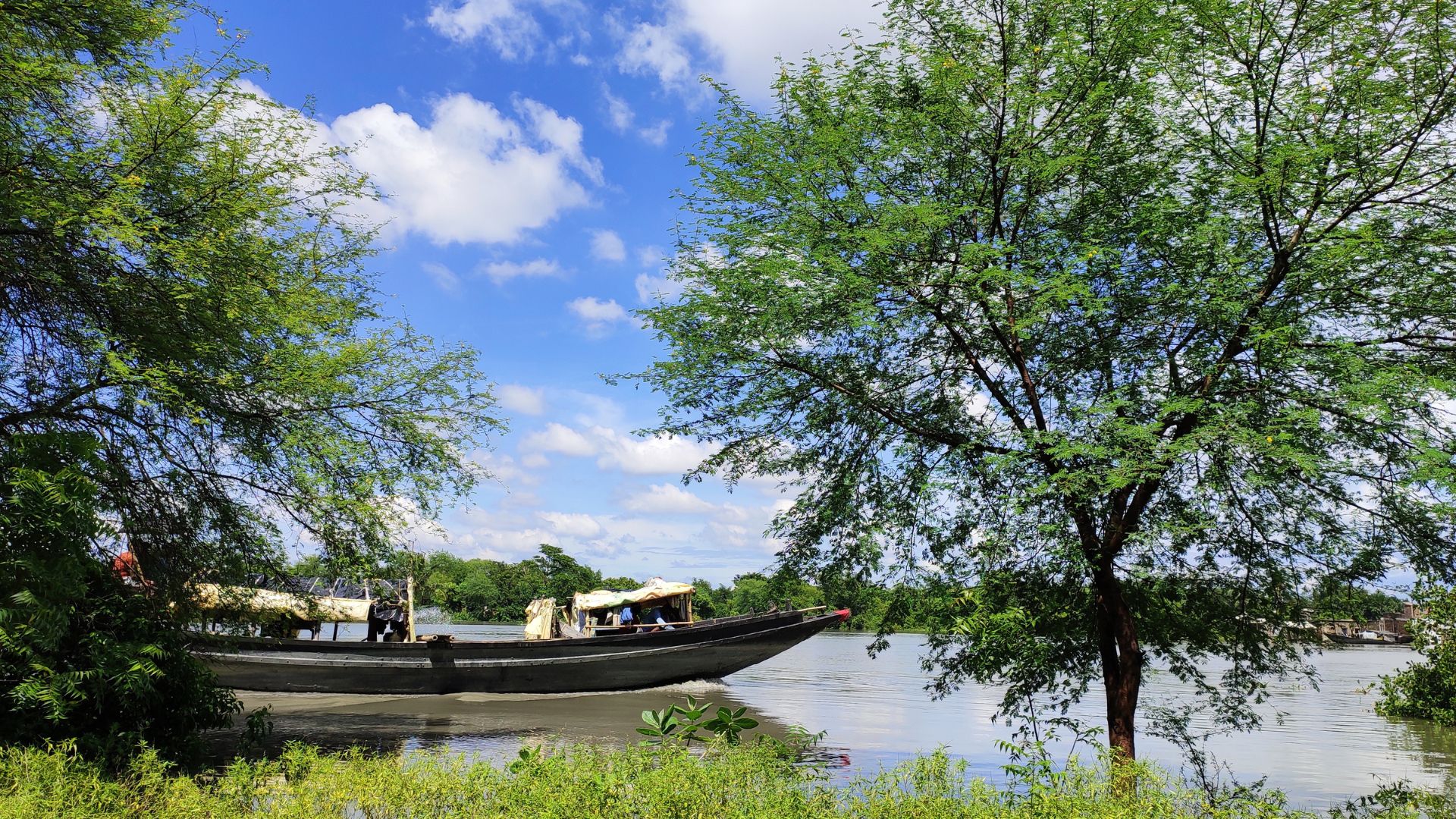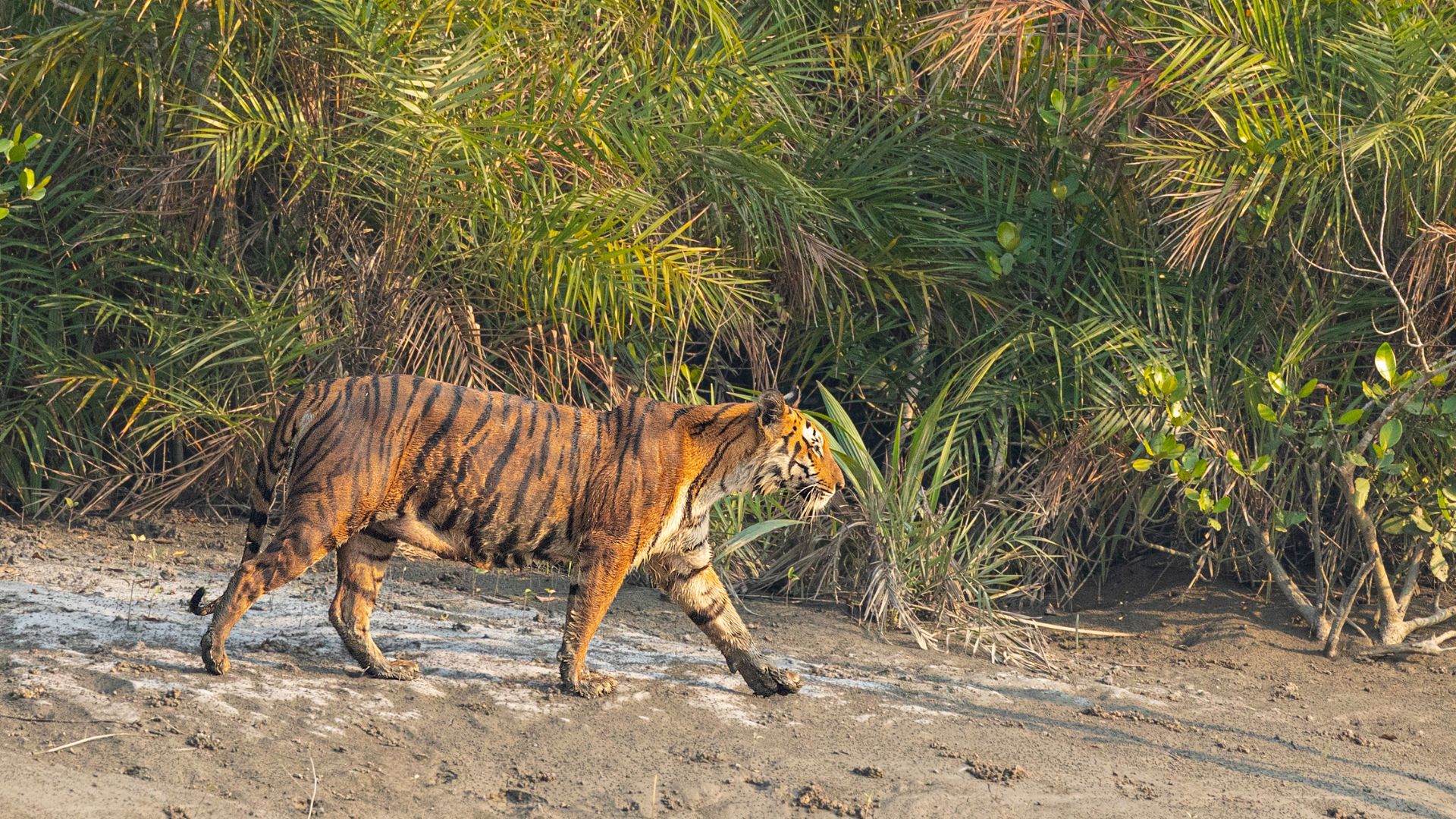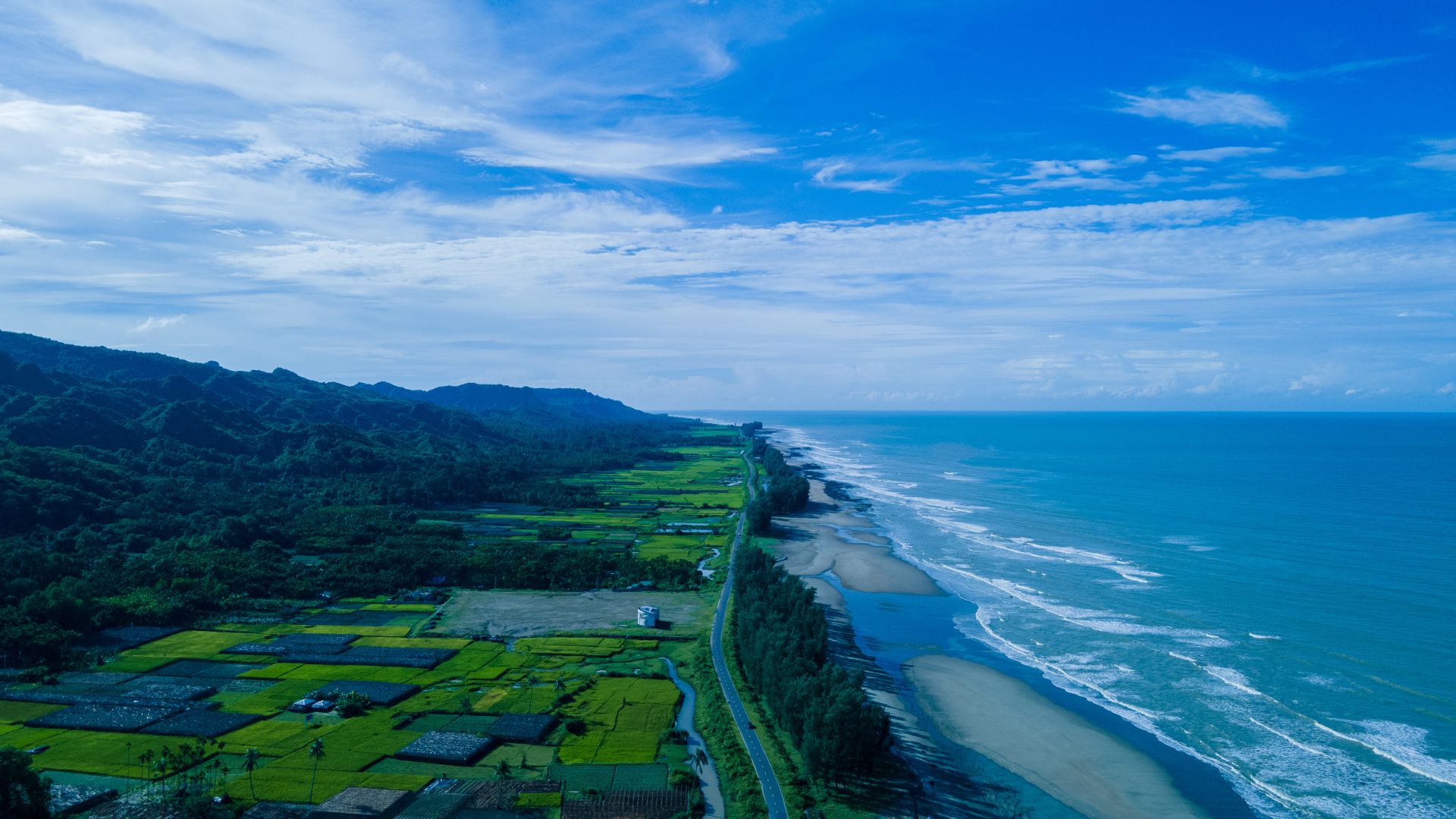Bangladesh may be known for its rivers, rice fields, and natural beauty—but scratch beneath the surface and you'll find a land steeped in history spanning over 2,500 years. From ancient Buddhist monasteries to Mughal mosques, from British colonial architecture to archaeological sites that predate Christ, Bangladesh's historical places tell stories of empires, religions, cultures, and civilizations that shaped South Asia.
This isn't just old buildings and ruins. These are places where Buddhist scholars once studied, where Mughal emperors held court, where the Bengal Sultanate flourished, where the British Raj left its mark, and where Bangladesh's own liberation struggle took shape. Each site is a chapter in the long, complex story of this region.
Bangladesh currently has three UNESCO World Heritage Sites, with several more on the tentative list. But beyond UNESCO recognition, the country has dozens of historically significant sites—from 15th-century mosques that showcase unique terracotta architecture to archaeological ruins that reveal ancient urban planning.
This guide covers 15 must-visit historical places in Bangladesh, including all UNESCO sites, major monuments, and hidden archaeological gems. Whether you're a history buff, architecture enthusiast, or just curious about Bangladesh beyond the typical tourist circuit, these sites offer glimpses into civilizations and eras that most people don't associate with modern Bangladesh.
What You'll Find: Buddhist monasteries from the 7th century, Mughal mosques and forts from the 15th-17th centuries, British colonial buildings, archaeological sites revealing ancient cities, and monuments from Bangladesh's independence war. The diversity is remarkable—a testament to Bangladesh's position at the crossroads of South Asian civilizations.
UNESCO World Heritage Sites in Bangladesh
Bangladesh has three sites inscribed on UNESCO's World Heritage List. These aren't just tourist attractions—they're places UNESCO deems to have "outstanding universal value" to humanity. Let's start with these crown jewels.
1. Historic Mosque City of Bagerhat
Location: Bagerhat District, Khulna Division (150 km from Khulna city)
UNESCO Recognition: Inscribed in 1985 as a Cultural Heritage Site
The History: In the 15th century, a Turkish general named Khan Jahan Ali arrived in the southern Bengal region and established a city called Khalifatabad. What makes this remarkable is how he transformed a marshy, inhospitable area into a thriving city with advanced urban planning, including a network of roads, bridges, reservoirs, and most notably—mosques.
Khan Jahan Ali built over 50 structures in the area. Today, about 30 monuments remain, including mosques, mausoleums, and water tanks, all dating back to the 15th century. The architectural style is unique—a blend of Mughal and pre-Mughal Islamic architecture adapted to the challenging marshy terrain.
Key Monuments in Bagerhat:
Sixty Dome Mosque (Shait Gumbad Mosque): The star attraction and one of the most impressive Islamic structures in the Indian subcontinent. Despite its name, it actually has 77 domes. Built entirely of baked bricks (since stone wasn't available in the delta region), this mosque covers about 160 feet by 108 feet. The interior has 60 pillars supporting the domes, creating a forest of arches. The walls are over 6 feet thick, allowing the building to withstand centuries of monsoons.
Khan Jahan Ali's Tomb: Located beside a large water tank (dighi), this simple tomb houses the remains of Khan Jahan Ali. It remains an active pilgrimage site, with thousands visiting during the annual urs (death anniversary celebration). The tomb complex includes crocodiles in the adjacent tank—locals believe these are sacred and descendants of Khan Jahan's pet crocodiles.
Nine Dome Mosque: Smaller but architecturally significant, featuring beautiful terracotta decoration and well-preserved brickwork. The nine domes are arranged in a 3x3 pattern, and the interior showcases excellent acoustics designed for the call to prayer.
Single Dome Mosque (Singar Mosque): Notable for its ornate terracotta decoration on exterior walls, featuring geometric patterns and floral motifs that have survived 500+ years.
Why Visit: This isn't a single monument—it's an entire medieval Islamic city preserved in time. Walking through Bagerhat feels like stepping into 15th-century Bengal. The architecture is unique to this region, the scale is impressive, and the historical significance is undeniable. If you visit only one historical site in Bangladesh, make it Bagerhat.
Practical Information:
- Entry: 200 BDT for Sixty Dome Mosque, 20 BDT for other monuments
- Best time: October to March (avoid monsoon season)
- Duration: Full day to see all monuments
- Getting there: 3 hours from Khulna by road, or 7-8 hours from Dhaka
- Accommodation: Limited options in Bagerhat town; better to base in Khulna
- Combine with: Sundarbans trip (3 hours from Bagerhat to Sundarbans entry points)
2. Paharpur Buddhist Vihara (Somapura Mahavihara)
Location: Naogaon District, Rajshahi Division (about 300 km northwest of Dhaka)
UNESCO Recognition: Inscribed in 1985 as a Cultural Heritage Site
The History: Built in the 8th century CE by Dharmapala, the second ruler of the Pala Empire, Somapura Mahavihara was one of the largest Buddhist monasteries south of the Himalayas. At its peak, it served as a major center of Buddhist learning, attracting monks and scholars from across Asia, including Tibet, China, and Southeast Asia.
The name "Somapura" means "city of the moon." This wasn't just a monastery—it was an ancient university, a thriving intellectual hub where monks studied philosophy, astronomy, mathematics, and medicine. Imagine: over 1,200 years ago, hundreds of Buddhist monks lived, studied, and meditated in this complex.
The Architecture: The monastery is built in a quadrangular layout covering about 27 acres. At the center stands a massive cruciform temple (the main shrine) rising in tiers—originally it may have stood 70 feet tall. The temple is surrounded by 177 monastic cells arranged along the four walls, each cell originally housing a monk.
What makes Paharpur architecturally significant is its influence—the design inspired temple architecture across Buddhist Asia. The Borobudur temple in Indonesia and temples in Myanmar show clear influences from Somapura's design.
The walls feature terracotta plaques depicting scenes from Hindu and Buddhist mythology, daily life, animals, and geometric patterns. These plaques are masterpieces of ancient Bengali art—detailed, expressive, and remarkably well-preserved considering they're over a millennium old.
What You'll See Today: Extensive ruins spread across the site. The central temple structure, though damaged, still conveys the original grandeur. You can walk through the monk cells, see the terracotta decorations up close, and imagine the bustling monastic life that once filled these spaces. A small museum on-site displays artifacts found during excavations—Buddha statues, coins, pottery, and inscriptions.
Why Visit: Paharpur is Bangladesh's most important archaeological site and a window into the country's Buddhist past. Standing in the ruins, you're literally walking where ancient scholars walked, where philosophical debates happened, where Buddhist texts were copied and studied. It's profound when you think about it.
Practical Information:
- Entry: 200 BDT for foreigners, 20 BDT for locals
- Museum: Additional 50 BDT
- Best time: October to March (site is exposed, very hot in summer)
- Duration: 2-3 hours to explore site and museum
- Getting there: 11 km from Joypurhat town, accessible by auto-rickshaw
- From Dhaka: 6-7 hours by bus to Joypurhat, then local transport
- Facilities: Basic restaurant, restrooms, guide services available
3. The Sundarbans (Natural Heritage)
Location: Khulna, Satkhira, and Bagerhat Districts
UNESCO Recognition: Inscribed in 1997 as a Natural Heritage Site
While primarily a natural site (the world's largest mangrove forest and home to Bengal tigers), the Sundarbans has historical significance too. The name "Sundarbans" possibly derives from "Sundari" trees or "Samudraban" (forest by the sea). Historical records mention these forests in writings dating back 2,000 years.
The region has been shaped by human interaction for centuries—from ancient salt production to colonial-era honey and timber collection to modern conservation efforts. Several historical structures dot the forest, including British-era watchtowers and ancient temples that now stand partially submerged or reclaimed by jungle.
The most historically significant spot is "Netidhopani," site of a 400-year-old temple dedicated to goddess Banbibi (forest goddess). The ruins stand in a clearing, accessible only by boat, and represent the blend of Hindu-Muslim folk traditions unique to this region.
Note: Given this is primarily a natural heritage guide about historical places, I mention Sundarbans for completeness as it's a UNESCO site, but it's covered in detail in our Sundarbans-specific travel guide.
Major Historical Monuments & Sites
4. Lalbagh Fort (Aurangabad Fort)
Location: Old Dhaka
Built: 1678 CE (Mughal Era)
Lalbagh Fort is Dhaka's most visited historical site—an incomplete Mughal fort complex that tells stories of imperial ambition, tragic romance, and architectural brilliance. Built by Prince Muhammad Azam (son of Emperor Aurangzeb), construction stopped when his daughter Pari Bibi died mysteriously, leading to the fort being considered cursed and abandoned.
Key structures: Diwan-i-Aam (audience hall), Pari Bibi's tomb, Hammam (bath house), mosque. The complex showcases classic Mughal architecture—red sandstone, marble domes, ornate carvings. The underground passages and strategic defensive positions reveal military planning sophistication.
Visit for: Best-preserved Mughal architecture in Bangladesh, beautiful gardens, museum with Mughal artifacts. Entry: 20 BDT. Time needed: 2-3 hours.
5. Ahsan Manzil (Pink Palace)
Location: Old Dhaka, by Buriganga River
Built: 1872 CE (British Colonial Era)
The bright pink palace on the riverbank was the residential palace of the Nawabs of Dhaka. Now Bangladesh's National Museum, it preserves the lifestyle of Bengali aristocracy during British rule. The Indo-Saracenic architecture combines Mughal and European elements—domed roof, wide verandas, ornate rooms.
Museum highlights: Original furniture, portraits, Nawab family belongings, colonial-era artifacts. The Durbar Hall (ceremonial hall) is magnificent with chandeliers and period decor. Entry: 50 BDT. Closed: Thursdays.
6. Kantajew Temple (Kantanagar Temple)
Location: Dinajpur District
Built: 1704-1752 CE
Often called the "most spectacular Hindu temple in Bangladesh," Kantajew Temple is a masterpiece of terracotta art. The three-story structure (originally nine spires, destroyed by 1897 earthquake) features 15,000+ terracotta panels depicting Hindu epics—Ramayana, Mahabharata—plus daily life scenes, flora, fauna.
Architectural marvel: Every inch is decorated. The craftsmanship is extraordinary—intricate detailing showing battles, festivals, gods, common people. Originally built by Maharaja Pran Nath, this late-medieval Hindu architecture represents Bengal's temple-building zenith.
Best visited: Morning light enhances terracotta details. Entry: 200 BDT foreigners. From Dhaka: 7-8 hours by bus.
7. Star Mosque (Tara Masjid)
Location: Old Dhaka (Armanitola area)
Built: Early 1800s, renovated early 1900s
This small mosque is an explosion of color—Japanese and English ceramic tiles creating star patterns covering walls and domes. Unlike austere traditional mosques, Star Mosque showcases early 20th-century decorative exuberance. The blue-star motifs gave it its name.
Unique feature: The fusion of Islamic architecture with imported decorative elements. Evening prayers create magical atmosphere with lights reflecting off colored tiles. Entry: Free (remove shoes, modest dress). Best time: Late afternoon.
8. Mahasthangarh
Location: Bogura District
Period: 3rd century BCE to 12th century CE
Bangladesh's earliest urban archaeological site—an ancient fortified city dating back over 2,300 years. Mahasthangarh was Pundranagara, capital of the Mauryan Empire's Bengal territory, later ruled by Gupta, Pala empires.
What remains: Massive fortification walls (5 km perimeter), citadel mound, palace foundations, temple ruins, several Buddhist stupas. Excavations revealed coins, pottery, sculptures spanning centuries. The site museum displays artifacts showing continuous habitation from 300 BCE to 1200 CE.
Historical significance: Proves Bengal's ancient urban civilization, trade connections, administrative sophistication. Entry: 20 BDT. Visit duration: Half day including museum.
More Must-Visit Historical Sites
9. Mainamati Ruins
Location: Comilla District | Period: 7th-12th century CE
A complex of 50+ Buddhist archaeological sites spread across hills. Key sites include Salban Vihara (largest monastery), Kotila Mura (three stupas), and Charpatra Mura. The site museum houses bronze Buddha statues, terracotta plaques, and inscribed copper plates. Significance: Major Buddhist cultural center rivaling Paharpur. Entry: 20 BDT.
10. Puthia Temple Complex
Location: Rajshahi District | Built: 16th-19th century
Largest concentration of historic Hindu structures in Bangladesh. Five major temples including Govinda Temple (exquisite terracotta), Shiva Temple (tallest in Bangladesh at 60 feet), and Jagannath Temple. Each represents different architectural styles and periods. Best for: Temple architecture enthusiasts, photography. Entry: 200 BDT foreigners.
11. Sitakot Vihara
Location: Dinajpur District | Period: 7th-12th century CE
Buddhist monastery ruins showing cruciform temple design similar to Paharpur. Less visited but equally significant archaeologically. The site reveals monastic life organization—cells, assembly halls, kitchen areas intact. Why visit: Peaceful, fewer crowds, authentic archaeological experience.
12. Sixty Dome Mosque Replica Sites
Various locations in Khulna Division
Beyond Bagerhat, several medieval mosques built in Khan Jahan Ali style: Bibi Begni Mosque (5 domes, ornate brickwork), Chunakhola Mosque (terracotta panels), Rezakhoda Mosque (single dome perfection). Combined, they tell complete story of 15th-century Bengal Islamic architecture evolution.
13. Armenian Church
Location: Old Dhaka (Armanitola) | Built: 1781
Dhaka's only surviving Armenian church, testament to once-thriving Armenian community. Simple exterior, ornate interior with carved wooden pews, Armenian inscriptions. Cemetery holds tombs from 18th-19th centuries. Cultural significance: Shows Dhaka's cosmopolitan trading past. Entry: Free (ring bell for caretaker).
14. Shaheed Minar & Liberation War Museum
Location: Dhaka city
Modern historical monuments commemorating Bangladesh's independence. Shaheed Minar (Martyrs' Monument) honors 1952 Language Movement. Liberation War Museum documents 1971 independence war through artifacts, photographs, personal stories. Historical importance: Living history, essential for understanding modern Bangladesh. Entry: Free (museum 30 BDT).
15. Curzon Hall
Location: Dhaka University campus | Built: 1904
Stunning Indo-Saracenic architecture by British, originally meant as town hall (named after Viceroy Curzon). Red brick with white accents, ornate arches, beautiful courtyard. Now houses Dhaka University science faculty. Architectural style: Perfect example of colonial-era blending of European and Mughal design elements. Visit: Exterior viewing, grounds accessible.
Practical Guide to Visiting Historical Sites
Best Time to Visit: October to March offers ideal weather—not too hot, minimal rain. Many sites are outdoors with limited shade. Summer (April-May) can be brutally hot. Monsoon (June-September) makes some sites muddy or flooded.
Entry Fees: Most sites: 20-50 BDT for locals, 200-300 BDT for foreigners. UNESCO sites slightly higher. Photography usually allowed; video may require additional fee. Student/senior discounts available at some sites.
Guided Tours: Official guides available at major sites (UNESCO sites, Lalbagh Fort). Rates: 200-500 BDT depending on site and duration. Highly recommended for archaeological sites—context enhances understanding dramatically.
Transportation:
- Dhaka sites: Rickshaw, Uber/Pathao for Old Dhaka monuments
- Regional sites: Hire car with driver (8,000-12,000 BDT/day) or join tour groups
- Northern sites (Paharpur, Mahasthangarh, Kantajew): Best combined in 2-3 day circuit
- Bagerhat: Combine with Sundarbans trip for efficiency
What to Bring: Comfortable walking shoes, sun protection, water, modest clothing (especially for religious sites). Cameras/phones welcome. Many sites have limited facilities—plan accordingly.
Cultural Etiquette: Remove shoes at mosques and temples. Dress modestly (covered shoulders/knees). Ask permission before photographing people. Be respectful during prayer times. Don't climb on fragile ruins.
Suggested Itineraries:
- Dhaka Historical Day: Lalbagh Fort → Ahsan Manzil → Star Mosque → Armenian Church (full day)
- UNESCO Circuit: Bagerhat (2 days) → Paharpur (1 day) = 3-4 days total
- Northern Heritage Tour: Paharpur → Mahasthangarh → Kantajew Temple → Puthia Complex (3-4 days)
Final Thoughts: Why Bangladesh's Historical Sites Matter
Here's something most people don't realize about Bangladesh: this land has been continuously inhabited and culturally significant for over 2,500 years. The sites in this guide aren't random old buildings—they're evidence of civilizations, empires, religions, and cultural movements that shaped not just Bangladesh, but South Asia and beyond.
When you visit Paharpur, you're walking where scholars from China, Tibet, and Southeast Asia came to study. When you enter Bagerhat's mosques, you're seeing architectural innovations that influenced Islamic building across the region. When you look at Kantajew Temple's terracotta, you're witnessing art forms that represent the pinnacle of Bengali craftsmanship.
What Makes These Sites Special:
Bangladesh's historical places tell a story of diversity. Buddhist monasteries, Hindu temples, Muslim mosques, Christian churches—all existing in proximity, all part of the same historical narrative. This isn't accidental; it reflects centuries of religious coexistence and cultural exchange that defined Bengal.
The architecture is distinctly Bengali. Whether it's the terracotta traditions of Kantajew, the brick-dome mosques of Bagerhat, or the monastery layouts of Paharpur, these aren't copies of styles from elsewhere. They're indigenous architectural traditions developed here, adapted to local climate, materials, and needs.
The Reality Check:
Not all sites are well-maintained. Some suffer from inadequate preservation, limited facilities, or lack of information. Archaeological sites like Mahasthangarh and Mainamati need imagination to appreciate fully—you're looking at foundations and outlines, not intact structures.
But that's also part of their authenticity. These aren't theme parks or heavily restored tourist sites. They're real historical places, sometimes rough around the edges, requiring visitors to engage actively rather than passively consume.
Who Should Visit:
If you're interested in history, architecture, archaeology, or cultural heritage—these sites are essential. If you want Instagram-perfect monuments, you might be disappointed. If you want to understand Bangladesh beyond beaches and rivers, these places provide that depth.
Final Recommendation:
Start with the UNESCO trinity: Bagerhat for Islamic architecture, Paharpur for Buddhist heritage, Sundarbans for ecological history. Then explore Dhaka's historical core (Lalbagh, Ahsan Manzil, Star Mosque). If time allows, venture to Kantajew for Hindu architecture and the northern archaeological sites.
These places aren't just Bangladesh's heritage—they're part of human heritage. They deserve to be known, visited, and preserved. And honestly? They're more fascinating than most people expect.
Pack your curiosity, bring comfortable shoes, and prepare to discover a Bangladesh most tourists never see—a land with deep historical roots, impressive architectural traditions, and stories spanning millennia.







